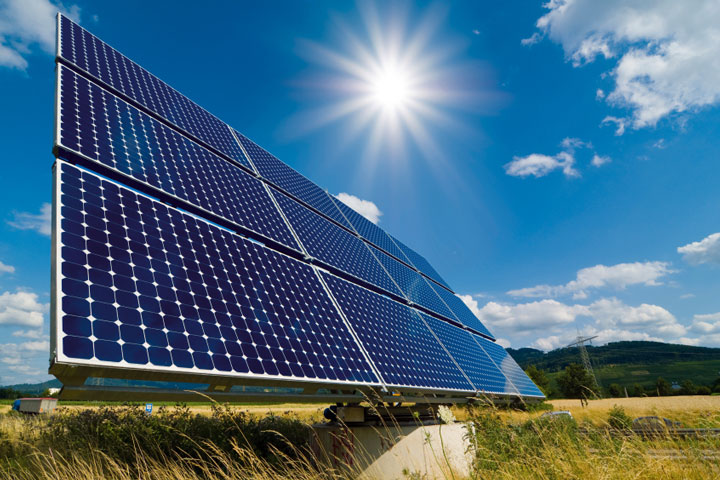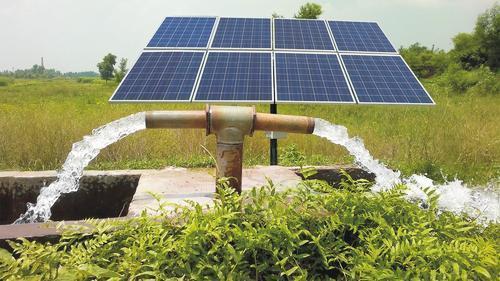Renewable energy capacity is growing more rapidly than expected, says the International Energy Agency (IEA), overtaking coal for the first time.
The IEA also says it has “significantly increased” its forecasts for the growth of renewable capacity over the next five years. Yet its forecasts continue to show future growth slowing down.
Carbon Brief looks at the latest IEA renewable forecasts and how they have changed.
Behind the curve
Every year, the IEA publishes a forecast for renewable energy over the next five years. Its latest report, the Medium Term Renewable Energy Market Report 2016, covers the period to 2021.
Previous iterations have consistently underestimated the growth of renewable energy. They consistently show growth declining in the first year of the forecast, then continuing at a steady, lower rate. In reality, renewables growth has increased in each year over the past decade.
This failing is not unique. The annual IEA World Energy Outlook, along with forecasts from many other organisations, have also missed the rapid growth and plummeting costs of renewables. Vox has a detailed look at why IEA forecasts have missed the mark.
This year, the IEA is countering the view that it is consistently behind the curve. In a move trailed in advance, it says it has “significantly increased” its five-year growth forecast for renewables.
The shift was given top billing in the IEA press release and reported by the publications, including the Financial Times, Bloomberg and Climate Home. But has it really changed its outlook?
On one level, the answer is yes. The IEA says renewable capacity will grow by 825 gigawatts (GW) over the next five years. This increase is 13% higher than the five-year forecast published in 2015.
For example in 2013, the IEA expected 132GW of renewables to be built in 2016. In 2015, it expected only 124GW. Now, it is forecasting 148GW of new capacity in 2016. These year-to-year changes in forecast additions are shown in the chart, below.
Change in IEA forecasts of annual renewable energy capacity additions. Source: Carbon Brief analysis of IEA Medium Term Renewable Market Reports (MTRMR) 2013-2016. Chart by Carbon Brief using Highcharts.
Flat Growth
There are signs that these changes are less significant than the IEA suggests, however. It is, perhaps, unsurprising that the IEA has raised its forecast additions. A record $286bn was invested in renewables in 2015, with the money buying a record 153GW of new capacity.
Fatih Birol, IEA executive director writes in a foreword to the report:
“Despite low energy prices, 2015 was a year full of records for renewables. For example, cumulative installed renewable power capacity now exceeds that of coal.”
Yet, as in previous forecasts, the IEA once again expects the rising trend in renewable additions to come to an end. After the record 153GW in 2015, it sees 148GW of new renewable capacity being added in 2016, 134GW in 2017 and 131GW in 2018 (the yellow columns in the chart below).
IEA forecasts of annual renewable energy capacity additions versus actual growth. Source: Carbon Brief analysis of IEA Medium Term Renewable Market Reports 2013-2016. Chart by Carbon Brief using Highcharts.
Even as capacity growth continues to climb, the IEA continues to forecast flat growth. Christian Breyer, professor of solar economy at the Lappeenranta University of Technology in Finland, tells Carbon Brief:
“I would say, honestly, it’s very similar to what we saw in the past from the IEA. I don’t see a major improvement…For the last 20 years, you always see the IEA only assumes the annual market will not grow. It was for all the last 20 years wrong.”
Prof Breyer has studied the history of IEA forecasts for the Energy Watch Group, a network of scientists and parliamentarians. It is “unbelievable”, he says, to assume flat growth for solar and wind when they are already the lowest cost sources of power in some regions. Breyer says:
“Assuming a declining annual market for solar and wind in the next five years, knowing it’s the least cost source of electricity. Sorry, even my grandmother would not believe this.”
Breyer says IEA forecasts have a series of failings, including a conservative approach to future policy changes and exaggerated costs. He adds: “Their capexnumbers are 20-30% too high”.
Tim Buckley, director of energy finance studies at the Institute for Energy Economics and Financial Analysis (IEEFA), tells Carbon Brief:
“IEEFA would put the deflation in total installed system costs for solar as likely to continue at 5-10% annually, double the 4% pa rate the IEA forecasts. Therein lies the core problem. They will be upgrading their renewable energy forecasts again next year.”
Accelerating transition
The IEA is well aware that it has been wrong in the past. Last year, it supplemented its main forecast with an “accelerated case”, to account for the possibility that it might be wrong in future.
During a press call discussing the report, Paolo Frankl, head of the IEA’s renewable energy division, told journalists: “Is [flat growth] the only possibility? No, there is another one.”
This accelerated case would see renewable capacity increase by 1,061GW between 2016 and 2021, reaching a total of 3,031GW. The capacity added in those years would be some 29% larger than in the IEA’s main projections.
The IEA report says three policy challenges would need to be addressed in order to meet the accelerated case forecast. These are: infrastructure and market design issues to improve the grid integration of renewables; stable policy frameworks giving greater certainty to investors; and mechanisms to reduce the cost of financing capital-intensive renewables.
Frankl said:
“Attracting investment really depends on policies. The cost reductions are impressive and, in many cases, the costs are equivalent or even lower than fossil fuels. But this does not mean, by itself, that renewables can now survive without policies, because of the existing market rules.”
Prices will have an impact, too. Frankl said that recent very low bids to build wind and solar capacity in countries such as Mexico were “a sign of how things could go actually faster”.
Of course, it remains possible that the IEA’s consistent forecast of flat growth will one day be proved right. The S-curve of innovation deployment suggests that exponential growth in the early years of a new technology eventually give way to linear growth as adoption spreads.
One sign that this point could be approaching for renewables comes from Bloomberg New Energy Finance (BNEF) analysis, which suggests that investment in renewables has dropped in 2016, after the record year in 2015.
However, BNEF sees “plummeting” costs outweighing this, with a shift from a regime of “spend more, install more” before 2010 to “spend the same, install more” since 2011. If anything, it expects the future to be one of “spend less, install more” rather than one of declining renewables growth.
Rising share
Even in its base case projection, the IEA expects renewable electricity generation to rise from 5,660 terawatt hours (TWh) in 2015 to 7,672TWh in 2021 (see chart, below).
IEA forecasts of annual renewable electricity generation versus actual output. Source: Carbon Brief analysis of IEA Medium Term Renewable Market Reports 2013-2016 and the BP Statistical Review of World Energy 2016. Chart by Carbon Brief using Highcharts.
This would see the renewable share of the global electricity mix rising from 21% in 2015 to 28% in 2021. In the accelerated case, renewables would generate nearly 8,200TWh, Carbon Brief estimates, equal to some 30% of global demand. However, this would still be less than recent coal generation, which stood close to 10,000 TWh in 2014.
Over the next five years, the renewable “growth story is mainly a wind and solar story”, the IEA’s Frankl says, with some three-quarters of the increase in capacity to be driven by these technologies.
It’s worth noting that the IEA’s forecasts have become increasingly bullish for solar, as cost reductions continue to outpace its expectations. The recent uptick for wind after a gradually falling outlook reflects favourable shifts in policy, such as the extension of the US federal tax credit.
For hydro, the downgraded forecasts reflect delays to projects in developing countries.
IEA forecasts of renewable energy capacity additions in 2018. Source: Carbon Brief analysis of IEA Medium Term Renewable Market Reports 2013-2016. Chart by Carbon Brief using Highcharts.
Conclusion
The IEA’s conservative forecasts are in line with the pledges countries made to the Paris Agreement on climate change. However, like those pledges, forecast growth falls short of what’s needed to meet the Paris goals on warming.
Nearly one year on from Paris, however, there is a glimmer of hope for its aims. While the IEA has increased its forecasts for renewables, it continues to see flat growth, in contrast to the ongoing trend and despite falling costs. IEEFA’s Buckley says:
“It is great they have admitted their forecasts of a year ago were wrong, [but] they were wrong the previous year and the year before that as well. At some point they are going to have to factor in realistic assumptions.”
Originally published by Carbon Brief














































